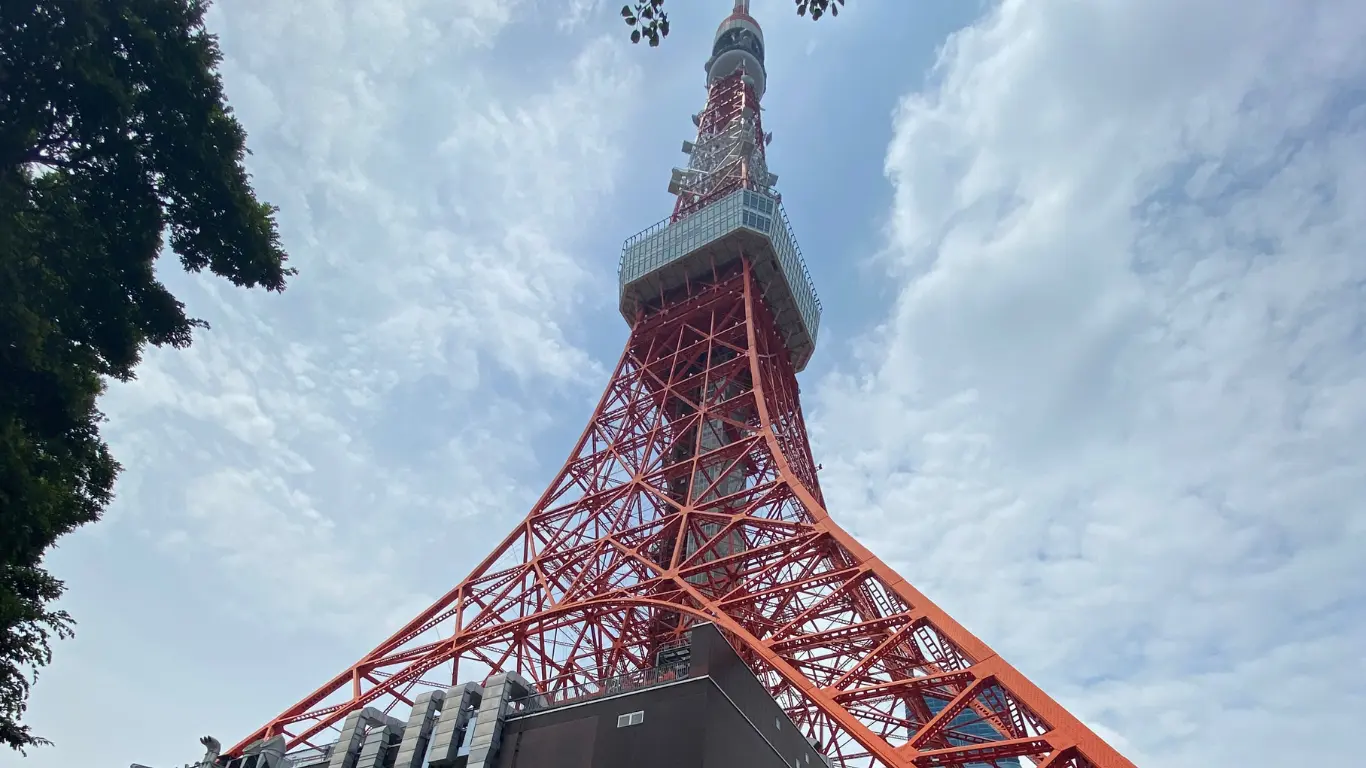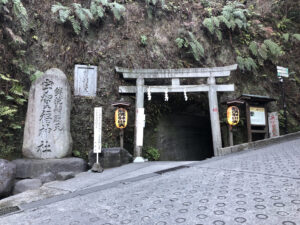Iconic Symbol, Tokyo Tower
When it was completed in 1958, Tokyo Tower was the tallest tower structure in the world and remained the tallest structure in Japan. However, with the opening of Tokyo Skytree in 2012, Tokyo Tower lost some of its glory. – Tokyo Tower was modeled after the Eiffel Tower in Paris, France, and is a communications and observation tower located in the Shiba-koen district of Minato, Tokyo. Upon its completion in 1958, it became the tallest freestanding tower structure in Japan and was bypassed by Tokyo Sky Tree. It is still the second-tallest structure in Japan behind Sky Tree. The tower was originally known as Denpato-Japan Radio Tower or Tawa-Tokyo Tawa but later changed to Nippon Denpato Tower or Tokyo Tower. The main deck of the steel self-supporting structure stands at 332 meters (1,091 ft) high with two observatories at 150 meters (490 ft) and 250 meters (820 ft). It remains the tallest structure in Minato district and is used for radio transmission and broadcasting from its center.
Tokyo Tower was inspired by the Eiffel Tower in Paris and is the second tallest structure in Japan. It has become a symbol for Tokyo and for Japan’s booming status as an economic power. Tokyo Skytree is the tallest structure in Japan and is used to transmit digital terrestrial broadcasting from various Japanese media companies such as Fuji TV, TBS, etc. The antenna at Tokyo Tower also transmits FM signals from various radio stations and maintains reserve broadcast equipment for Radio signals. Tokyo Tower stands as a proud symbol of Japan’s technological advancement, with it being built when their economic power was rising quickly. Its design remains inspired by the Eiffel Tower of Paris, though it stands taller than its French counterpart in height.
Tokyo Tower was constructed in 1958 as a response to the need of a large broadcasting tower in the metropolitan area of Tokyo. It was built to provide Japan’s national broadcaster, NHK, with a reliable broadcasting antenna and to transmit higher frequency waves than ordinary antennas. In addition to being surrounded by forests and high-rise buildings, Tokyo Tower also has an observation deck and is lit up at night for tourists.
Every night from July to September, the tower is illuminated in a special summer-themed light show known as “Tokyo Tower: Tower Lighting Change”. The landmark light feature switches between silver lights and a variety of other colors to illuminate the tower in an array of hues. On July 7th each year, the Tokyo Tower lights up in seven different colours to celebrate Tanabata, a Japanese festival that celebrates the meeting of two star-crossed lovers. The illuminated tower creates an impressive sight that can be seen from nearby Shiba Koen Park and makes it an ideal date night spot.
Tokyo Tower is the center of Tokyo and Japan’s highest building structure, standing at 333 meters tall. From the ground to Tokyo Tower, one can see the giant metropolis sprawled out before them in all its glory. At Tokyo Skytree, you can go even higher – 634 meters to be exact – and take in a higher and more expansive view of the nation’s capital skyline. Seeing it from such a height is truly magical; it looks like a fantastic bird’s eye view! From the highest observation deck, you can also see dazzling views of Tokyo Bay and beyond. For those looking for an even more special observatory experience, there is also a Skywalk window complete with glass panels that give visitors an uninterrupted view of their panoramic cityscape.
The 333-meter tower is the second tallest building in Tokyo after the Tokyo Skytree, and is one of the most important landmarks in the city. It was built in 1958 to revitalize a chaotic skyline, and has since been frequented by locals and tourists alike for its two panoramic observatories. Visitors to Tokyo Tower can visit an observation deck located at 150 meters above ground, which includes a main tower, antenna, and other structures that constitute the whole tower. Tokyo Tower has become an important tourist attraction due to its telecommunications capabilities as well as designer Motoko Ishii’s eye-catching designs. The orange-and-white stripes of the tower form a strong landmark against Tokyo’s skyline; it stands out from nearby buildings such as Mori Building and other skyscrapers.
Enjoy Walking up the Stairs
It is possible to walk the 600 stairs to the Main Deck, taking about 20 to 30 minutes.
During the walk, you can enjoy the view of surround area of Roppongi, and see the structure of the tower.
The option of stairs are widely know for the locals, many enjoy the experience and the stairs gives more than enough safety even for the child to walk up.
Additionally, there are elevators that moves you to the main deck in just few minutes. To access the top deck, the highest observation deck, only the elevator option is given.
Maindeck Height: 150 meters
Top Deck Height: 250 meters
Way to Access Tokyo Tower
Trains:
Metro Hibiya Line “Kamiya-Cho” Exit 1, 7 minutes walk.
Metro Mita Line “Onarimon” Exit A1/A4, 6-10 minutes walk.
Metro Asakusa Line “Daimon” Exit A6, 10minutes walk.
JR Line “Hamamatsu-cho” North Exit, 15 minutes walk.
Bus:
From Tokyo Station Tokyu Bus 98 “Tokyo Tower” Stop.
JR Takeshiba Hydrogen Free Bus From Tokyo Station Marunouchi~Waters Takeshiba~Hinode Futo~Tokyo Tower
Car:
Parking 1hour/600yen
Places to Stay Around Tokyo Tower
Informations
Business Hour:
Main Deck: AM9:00~PM11:00
Top Deck: AM9:00~PM10:45
Ticket:
Adult: 1200yen (Main Deck) 3000yen (Top Deck)
High Schooler: 1000yen (Main Deck) 2800yen (Top Deck)
Jr High, Elementary Student: 700yen (Main Deck) 2000yen (Top Deck)
Age 4-6: 500yen (Main Deck) 1400yen (Top Deck)
Buy the ticket online to save up to 200yen !
Online ticket for Top Deck (Credit Card Only, External Sites)









